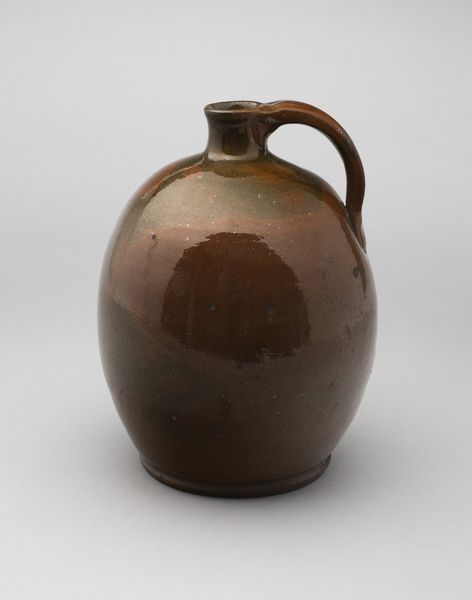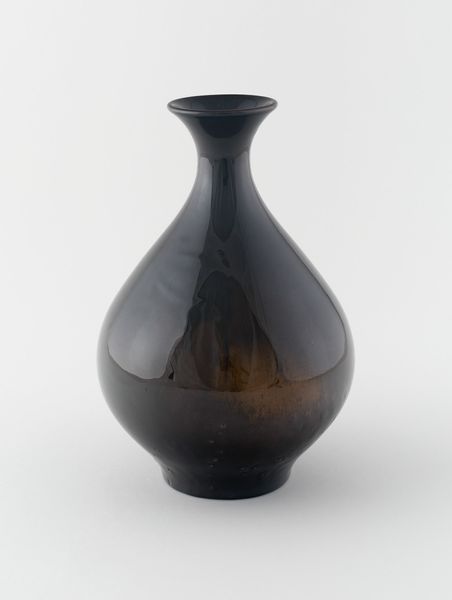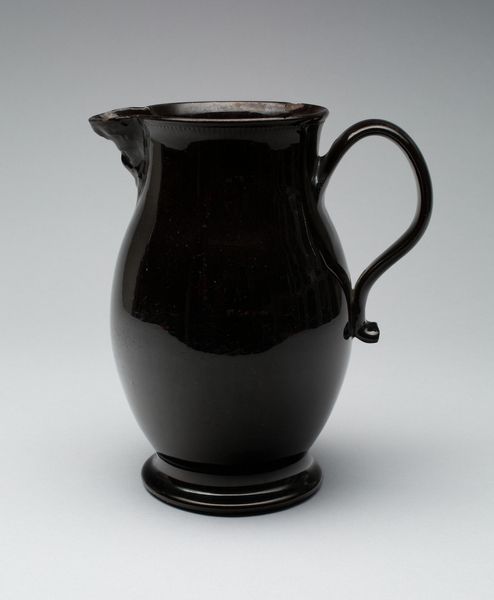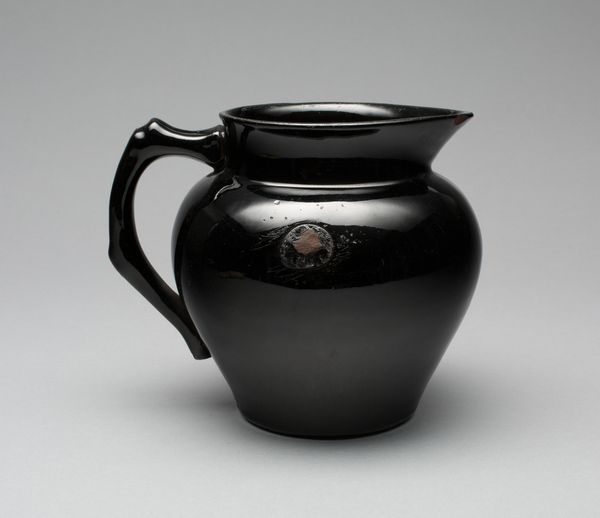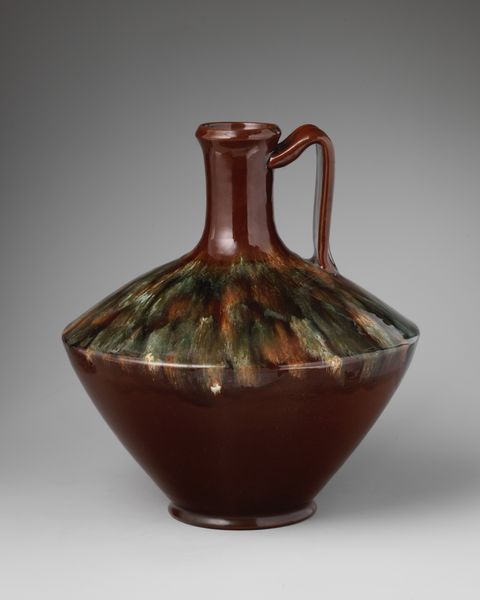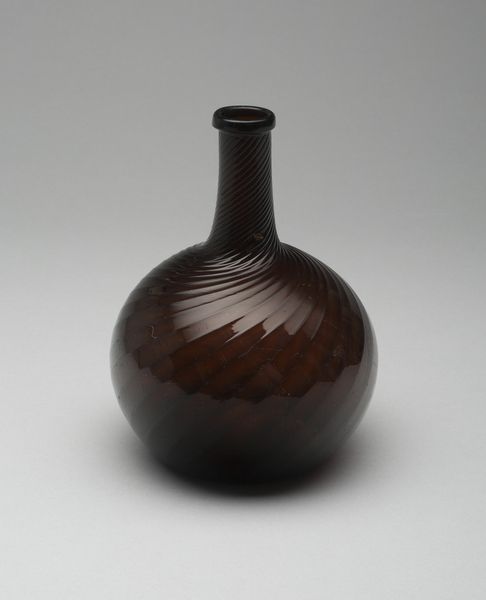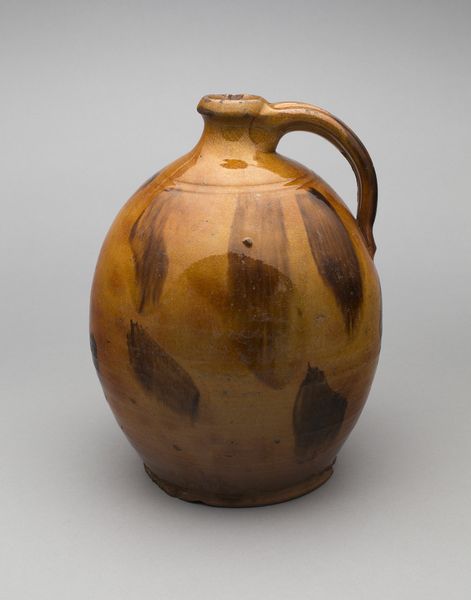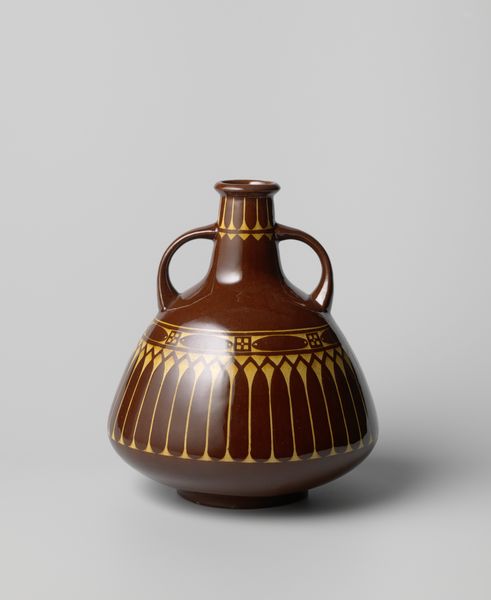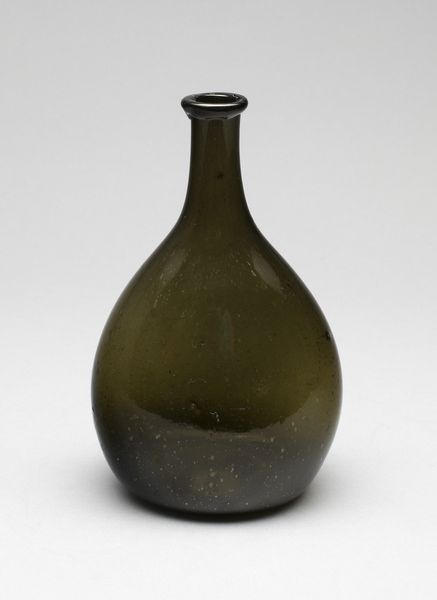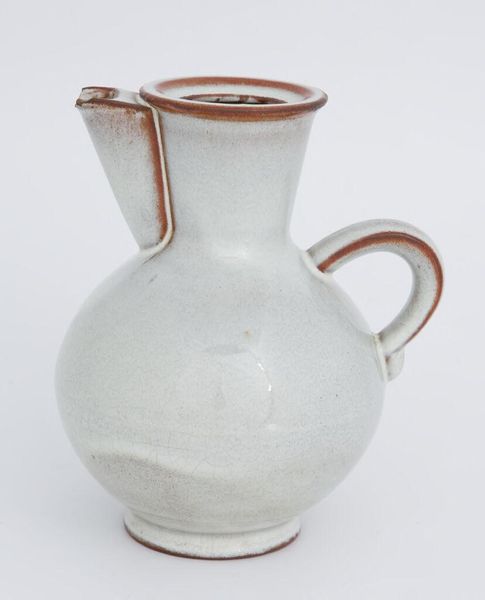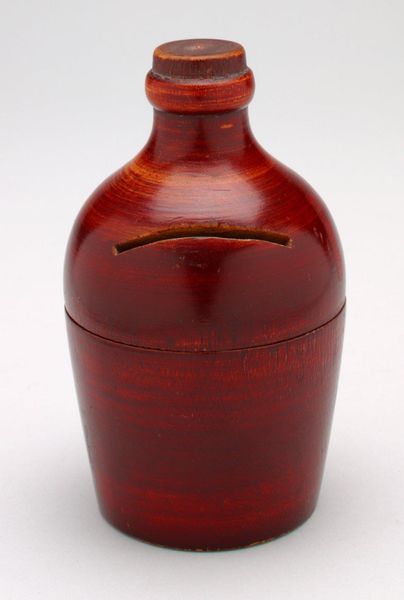
glass
#
folk-art
#
glass
#
decorative-art
Dimensions: 13.3 × 6.4 cm (5 1/4 × 2 1/2 in.) (diam. base)
Copyright: Public Domain
Curator: This is a glass jug made by Zanesville Glass Works, likely somewhere between 1815 and 1830. Its currently held at The Art Institute of Chicago. What strikes you initially about it? Editor: Well, it’s wonderfully squat! It's this chubby little vessel of brown glass that just makes me want to hold it. The dark handle gives it a certain playful seriousness, if that makes sense. Curator: It does! It's interesting you say that because although it's functional, there is an undeniably artistic element to it. It’s labeled as Folk Art. What can a piece like this tell us? Editor: The materiality here is everything. I want to know about the furnace they used, the very composition of the glass itself. Was it locally sourced? Who were the glassblowers? Labor is very important when examining objects like this because craft production reflects the economic system. Curator: It's incredible to think about the labor behind such an everyday object. To consider the skill and the fire required. How that glass was formed, by what and whom! There is this feeling of honest craftsmanship about it. I almost sense the breath of the glassblower caught within the glass. A certain presence... Editor: Exactly. Its simplicity screams purpose but that’s deceptive, it's all designed with careful execution. The maker probably blew thousands of these to develop the technique, with material constraints in mind all along the process. Curator: I can’t help but imagine this in a rustic farmhouse. Sunshine streaming in, catching that lovely brown glass, and illuminating the spirit or whatever that might fill it! Maybe freshly pressed cider... or even something a little stronger? Editor: And I wonder if such a picturesque vision obscures a tougher reality, the social context that gave rise to the jug. Were people exploited so that folks might fill it with cider? Examining material conditions and relationships—I think that is just so crucial when evaluating craft. Curator: Yes, that friction creates this amazing, very potent ground from which new considerations bloom! So, thank you for highlighting these aspects of the glass jug; for looking beyond that golden pastoral vision to explore these valuable contexts! Editor: Thank you! It is exciting how looking at materiality encourages different vantage points when examining an object like this!
Comments
No comments
Be the first to comment and join the conversation on the ultimate creative platform.
